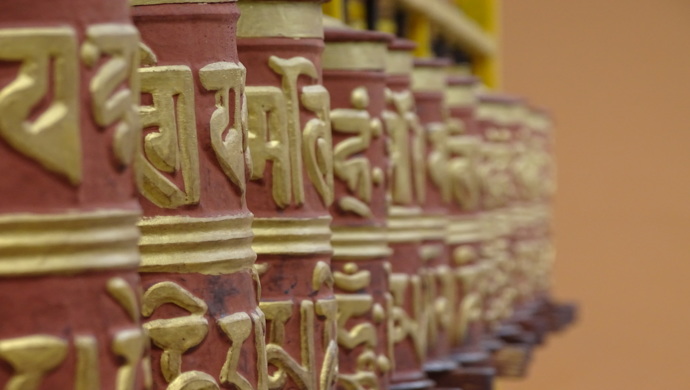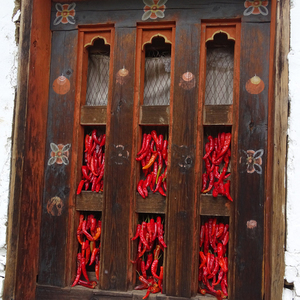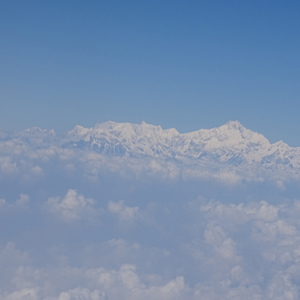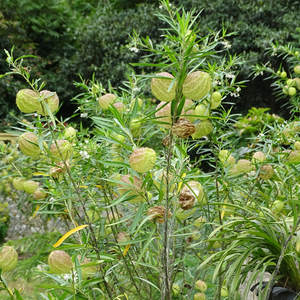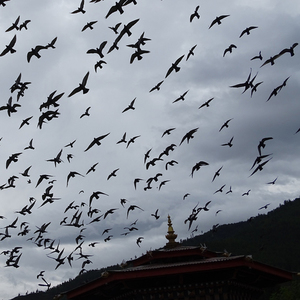Day 1. Arrive Paro:
Altitude of Paro 2,280 m
Your flight to Paro on a clear day, is marked with the panoramic views of the Himalayas including the Everest and other famous Peaks. The approach through the foothills and the landing (including few steep turns) at the tiny airstrip of Paro has been termed as adventurous by many travelers. After the completion of immigration formalities at the Paro Airport exit door, you will be received by your Bhutanese guide with traditional “Tashi Khadar”. Thereafter you are driven to your hotel and do your check in. You can relax for the rest of the day. Enjoy a traditional cultural show arranged for you later in the evening. During the show you could also join in to get a feel of an important aspect of Bhutan.
Meals – Lunch and Dinner. Overnight at the Hotel in Paro.
Day 2. Paro Sightseeing:
After breakfast, start your day with a hike to
- Taktsang Monastery (Tiger's nest), the abode of gods and monks situated at an altitude of 3100m on the Upper Paro Valley, Bhutan. As per the legend, Guru Padmasambhana (Guru Rinpoche), the tantrum mystic who brought Buddhism to Bhutan, came in the form of Dorje Droloe riding a flying tigress to subdue the demon that was obstructing the spread of Buddhism in the Himalayas.
After the completion of the hike, you would be served picnic lunch among the woods. Post lunch, visit
- Kyichu Lhakhang, one of the oldest monasteries in Bhutan built in the 7th century by the Tibetan Emperor Songtsen Gampo.
Later in the day, you have an option of being driven to village house to witness the traditional rural life in a Bhutanese village. You can also choose to have your dinner in the house with the Family or also spend your overnight in the village house (needed to be confirmed at the time of confirmation of the Tour) or be driven back to your hotel.
Meals – Breakfast, Lunch and Dinner. Overnight at the Hotel in Paro.
Day 3. Paro Sightseeing - Thimphu:
Distance: 65 kms, Driving Time: 2 hrs. Altitude of Thimphu: 2350 m
After breakfast, you would be taken to
- Paro Rimpung Dzong, also known as Fortress of the heap of jewels, built during the time of Shabdrung Ngawang Namgyal in 1646.
- Ta Dzong, an ancient watch tower overlooking Rimpung Dzong built in 1951 now converted into national museum.
You would have lunch, in a local Restaurant. Post lunch, you would be transferred to the Capital City of Bhutan – Thimphu. On the way visit
- Visit Tamchog Lhakhang, located along Paro-Thimphu highway on the base of a mountain across the Pa Chhu river built in the early 15th century by the great iron bridge builder Thangtong Gyalpo.
On arrival check in at the hotel. You can relax for some time in the Hotel.
Meals – Breakfast, Lunch and Dinner. Overnight at the Hotel in Thimphu.
Day 4. Thimphu Sightseeing:
Today you would be driven in and around Thimphu covering key places of interest. After breakfast you would visit
- Kuensel Phodrang, the gigantic Buddha Dordenma Statue located atop a hill in Kuensel Phodrang Nature Park.
- National Memorial Chhorten, a Stupa built in 1974 to honor the third Druk Gyalpo, Jigme Dorji Wangchuck. Every morning till night old people and young people circumambulate the Chhorten. You may choose to light butter lamps and also circumambulate around the Chorten.
- Zorig Chusum, Premier institute of traditional arts and crafts in Thimphu established with an objective of preserving “thirteen arts and crafts of Bhutan”.
- Folk Heritage, traditional house giving an insight to the Bhutanese lifestyle, and artifacts from the rural households
Thereafter, you would be taken to a local restaurant for lunch. In the afternoon you would be taken to
- Sangaygang View Point, also known as BBS Tower offering panoramic view of Thimphu Town situated at an elevation of 2,685 m.
- Changangkha Monastery, popular fortress like temple perched on a ridge above Central Thimphu built in 15th Century by Lama Phajo Drugom Zhipo.
- Takin Preserve Centre, see Takin (National animal of Bhutan) It is a unique combination of Goat and an Antelope
- Tashichhodzong, or ‘the fortress of the glorious religion’. Initially erected in 1641 by Shabdrung Ngawang Namgyal, it was rebuilt in the 1960s during the reign of Bhutan’s third king in the traditional style, without plans or nails. It houses some ministries, His Majesty’s secretariat, and the central monk body and opens after 5 PM.
On the completion of sightseeing, you are driven back to your hotel. After relaxing for some time you shall be served with dinner.
Meals – Breakfast, Lunch and Dinner. Overnight at the Hotel in Thimphu.
Day 5. Thimphu - Punakha/Wangdue Sightseeing:
Distance: 77 kms, Driving Time: 3 hrs. Altitude of Punakha: 1310 m
After breakfast you are driven to Punakha/Wangdue, for your second leg of the tour. On the way, after roughly an hour’s drive, you would stop at
- Dochula Pass, lies at an elevation of 3,150 m and is a great place to view the higher Himalayas. The landmarks around the pass includes 108 Druk Wangyal Stupas built under the patronage of Queen Ashi Dorji Wangmo Wangchuk.
You would drive through curvy, mountainous road, patches of which are being repaired. Owing to road widening work, you may find too many stalls along the road side selling snacks and water. It is preferable you buy it at the start of the tour. The drive from Thimphu to Punakha over Dochula leads from cool heights of Thimphu to balmy, lush landscapes of Punakha. After arrival at Punakha, check in to the hotel. Post lunch, you would visit
- Punakha Dzong, built in 1637 by Shabdrung Ngawang Namgyal. For many years until the time of the second King, it served as the seat of the Government. It is still the winter residence of Je-Khenpo (The Chief Abbot of the Central Monastic Body of Bhutan).
- Chhimi Lhakhang, a famous Temple, which is also known as “The Temple of Fertility” built by Lama Drukpa Kuenley.
Later you are driven back to the Hotel. Evening free for leisure activities.
Meals – Breakfast, Lunch and Dinner. Overnight at the Hotel in Punakha/Wangdue.
Day 6. Punakha - Gangtey/Phobjikha:
Distance: 78 kms, Driving Time: 3 hrs. Altitude of Gangtey/Phobjikha: 2900 m
After breakfast, check out of the hotel and get driven to Gangtey/Phobjikha. The road begins a climb up the black mountains national parks, passing through some roadside villages. At Nobding, the road makes a turn-off from the main east-west Highway. After a short distance and once you cross the pass, almost all of a sudden, a wide and spectacular Phobjikha valley with Gangtey Monastery atop a hill appears, overlooking the valley. Owing to road widening work, you may find too many stalls along the road side selling snacks and water. It is preferable you buy it at the start of the tour. On the way you can stop for photography opportunity. While in Phobjikha, visit
- Gangtey Goemba, an important monastery of Nyingmapa school of Buddhism, the main seat of the Pema Lingpa tradition. The present Abbot, Kunzang Pema Namgyal is the ninth re-incarnation. It is one of the the largest Nyingma monastery in Bhutan.
Later, you would be taken to a local farmhouse for a typical Bhutanese lunch. Post lunch, you can explore
- Phobjikha Valley, one of the most beautiful glacial valleys in the Himalayas. It lies at an elevation of 3,000 m. It is surrounded by a many small villages. Phobjikha is best known for the rare black necked cranes that migrate here from the Tibetan Plateau to avoid the extremely cold winters.
Thereafter return to your hotel. Evening free for leisure.
Meals – Breakfast, Lunch and Dinner. Overnight at Hotel in Phobjika/Gangtey.
Day 7. Gangtey - Trongsa - Bumthang:
Distance: 188 kms, Driving Time: 6 hrs - 7 hrs. Altitude of Bumthang: 2600 m.
After breakfast, check out from hotel and drive to Trongsa across Pele-La-Pass (11.120 ft.). Here you would witness an abrupt change in vegetation, with mountain forest replaced by high altitude dwarf bamboos. This is one of the most picturesque drives, cutting past charming hamlets, serene farmlands, hours and hours of deep forests and valleys, hills filled with Rhododendrons of every hue, the drive to Bumthang is long but you wouldn’t want it to end. Again, it recommended that you carry your snacks and water at the start of the tour. On the way stop at
- Chendbji Chhorten, built during the 18th century by Lama Shida in the style of the great Boudhanath Chhorten of Nepal to cover the remains of an evil spirit which is said to have manifested as a gigantic snake.
Further ahead visit
- Trongsa Dzong, the seat of power over Central and Eastern Bhutan. It was built by Chogyal Minjur Tempa was later enlarged at the end of the 17th century by Desi Tenzin Rabgay. Trongsa Dzong is the ancestral home of the present Royal Family. The first two hereditary kings ruled Bhutan from this Dzong.
- Ta Dzong, an ancient watch tower built in the year 1652 by Chogyal Minjur Tempaa as per the directions of Shabdrung Ngawang Namgyal. It has been converted into a museum and represents a tasteful blend of tradition and modernity.
Drive further to Bumthang over the Yutong-La-Pass (11,155 ft.). Enroute we would stop for lunch. While in Chumey valley in Bumthang, visit the.
- Yathra Weaving Factory, located in the Zungye village in Chumey, around 17 kms approximately, before reaching the main town of Bumthang. Yathra is the most famous textile product of Bumthang. Yathra is a hand woven fabric made from the wool of sheep or Yak.
On arrival check in at the hotel. Evening free for leisure and walk in the valley.
Meals – Breakfast, Lunch and Dinner. Overnight at hotel in Bumthang.
(Note: the roads to Bumthang are not good due road widening work going on)
Day 8. Bumthang Sightseeing:
After breakfast, you would be taken around the city to visit the
- Jakar Dzong, literally meaning the Castle of White Bird. The current structure was built in 1667. Jakar Dzong is now the main administrative center for Bumthang District, the Dzong also houses the regional monk body.
- Jambay Lhakhang, built by King Srongsen Gampo of Tibet in the 7th century and is one among the 108 monasteries built by him to subdue evil spirits in the Himalayan Region. October one of the most spectacular festival, “Jambay Lhakhang Drup” is staged here.
- Kurjey Lhakhang, named after body print of Guru Rimpoche. It consists of three temples. The first temple was built in the year 1652 on the rock face, where Guru Padmasambhava meditated in the 8th century. The second temple is considered to be the most holy as it is built on the site of the cave which contains the imprint of the Guru's body. In the year 1990, Ashi Kesang, the Queen mother built the third temple. All the three temples are surrounded by 108 chorten wall.
- Tamshing Lhakhang, literally meaning the Temple of the good message. It was established in 1501 by Terton Pema Lingpa and has ancient religious paintings such as 1000 Buddhas and 21 'Taras' (female form of Bodhisattva).
Thereafter you would be taken to a local restaurant for lunch. In the afternoon you would be taken to
- Membar Tsho, also known as “The burning Lake”. It is one of the most sacred sites in the region and relates to the famous treasure revealer, Terton Pema Lingpa. Following a prophecy by Guru Rinpoche, Terton Pema Lingpa unearthed a treasure from the bottom of the lake. He dived into the lake with a burning butter lamp and reappeared with the butter lamp still burning and a chest and scroll of paper in his hand (treasures)
The evening ends with a visit the cheese and apple juice/wine making factory. You have an option of Tasting the Locally made Red panda beer here.
Meals – Breakfast, Lunch and Dinner. Overnight at hotel in Bumthang.
Day 9. Bumthang - Mongar:
Distance: 190 kms, Driving Time: 6 hrs - 7 hrs. Altitude of Mongar: 1600 m.
After breakfast, drive to Mongar. Stop at places to view scenery and for photography. Drive from Bumthang to Mongar shall take you across the highest point in Bhutan’s motorable road. The point is known as the Thrumsingla Pass at an altitude of 4000 m. On a clear day, Bhutan’s highest peak, Gangkar Puensum can be seen from the way. During the drive, you would climb above the tropical rain forests into the dryer pine forests, finally summiting a pass as always at a stupa and prayer flags. The winding road gradually descends through corn fields, rice terraces and tropical fruit plants such as Mangos, Guavas begin to appear. Picnic lunch on the way. The evening ends exploring the Mongar town.
Meals – Breakfast, Lunch and Dinner. Overnight at the Hotel in Mongar.
Day 10. Mongar - Trashigang:
Distance: 91 kms, Driving Time: 3 hrs. Altitude of Trashigang: 1500 m.
After breakfast, visit the.
- Mongar Dzong, which was rebuilt in 1953 and it is unique as it has two entrances. There are about 60 young monks residing in this Dzong. You will see the images of the Buddha of long life, as well as Guru Rinpoche and the Shabdrung. No drawings or nails have been used in building the Dzong.
Then drive to Trashigang and have lunch. On the way pass through Kori La, pass located at an height of 2,450 m. You will pass through the scattered village and will also come across the people speaking different dilects compare to the western Bhutan. While in Trashigang, visit the
- Trashigang Dzong - This Dzong lies on the headland of the Dzongkha that gives us the confluence of the Drangme Chhu and the Gamri Chhu. The Trashigang Dzong was built in the year 1659 and serves as the administrative and religious seat for the Trashigang district.
In the evening, explore the Trashigang town.
Meals – Breakfast, Lunch and Dinner. Overnight at Hotel in Trashigang.
Day 11. Trashigang - Trashiyangtse - Trashigang:
Distance: 52 kms, Driving Time: 2 hrs. Altitude of Trashiyangtse 1715 m.
After breakfast, you would go for a day excursion to Trashiyangtse. Trashiyangtse was established as a district in 1992 and lies at an elevation of Dzongkhag is 1750-1880 m. This place is also the winter homes to endangered black-necked cranes. It is also the home to Ludlow’s Bhutan Glory, the national butterfly of Bhutan. The place is also famous for “dapa and phop” (hand crafted traditional wooden plate and mugs). On the way visit the
- Gomkora Lhakhang, situated 24 km from the Trashigang Dzong in Trashigang in the eastern Bhutan. The name Gomphu Kora (Gomphu - “Meditation Cave”, Kora - “Circumambulation”) is derived from a cave in the place. It is said that in the 8th century, an evil spirit named Myongkhapa escaped from Samye in Tibet and concealed himself inside a rock where Gomphu Kora stands today. Guru Rinpoche meditated for three days inside a rock cave in this place and subdued the evil spirit. Gongkhar Gyal, grandson of Lhasay Tsangma, built a small shrine at Gomphu Kora around the 10th century A.D. In the 14th century, Terton Pema Lingpa, visited Gomphu Kora and enlarged the existing shrine. It was renovated and enlarged in the 15th century by Yongzin Ngagi Wangchuk, the grandfather of Shabdrung Ngawang Namgyel. He also inscribed murals on the walls of the temple.
Drive further to Trashiyangtse. On the way stop for lunch. Later visit the
- Chhorten Kora, the most important stupa in Trashiyangtse built in the year 1740 by Lama Ngawang Loday, the nephew of Zhabdrung Ngawang Namgyal. The stupa was built to subdue a demon believed to have been living at the site where the chorten is now located. Modeled after the famous Boudhanath stupa in Nepal and was consecrated by the 13th chief Abbot of Bhutan Je Sherub Wangchuk.
In the evening, drive back to Trashigang.
Meals – Breakfast, Lunch and Dinner. Overnight at Hotel in Trashigang.
Day 12. Trashigang - Samdrupjongkhar:
Altitude of Samdrupjongkhar 220m
After breakfast, drive to Samdrupjongkhar. In the evening, explore the Samdrupjongkhar Town.
Meals – Breakfast, Lunch and Dinner. Overnight in Hotel.
Day 13. Departure:
Today we will bid farewell to this beautiful country. We hope by now you must have made some good friends and also have taken photographs and beautiful memories of Bhutan. We certainly hope of serving you again on your next visit to this great country or the Last Shangri-La. Tashi Delek
